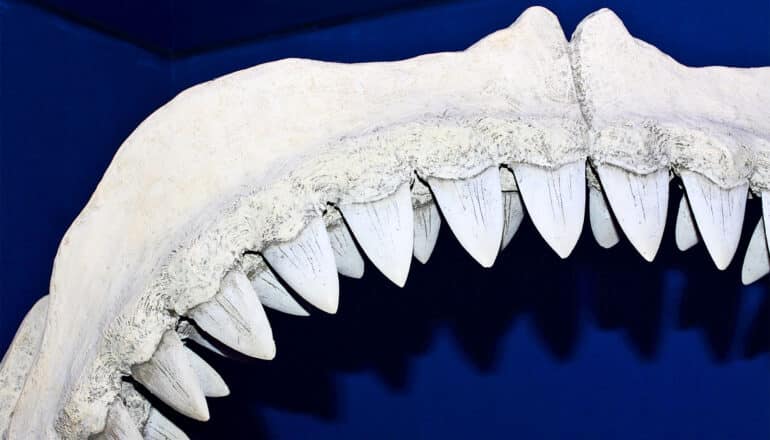
HighLights
Focus
World News

Global markets plunge as Trump launches ‘worst case scenario’ with tariffs
Stock markets fell sharply worldwide, especially in the US, after President Donald Trump enacted aggressive tariff measures as part of his broader trade war.
World News
Hegseth faces Pentagon watchdog probe over Houthi attack plan Signal chat
The Pentagon’s acting inspector general will also look at other U.S. defense officials’ use of the publicly available encrypted app.
World News
Sonos says it’s ‘actively assessing’ what Trump tariffs will mean for customers
Even with all the self-induced turmoil that Sonos has been through over the last year, if you’ve been eyeing any of the company’s products, it might be wise to buy sooner than later. In an email, spokesperson Erin Pategas tells me that Sonos is “closely […]
World NewsRound the Events

by asfandyar
Women free style Gold medal goes to……
Lorem Ipsum is simply dummy text of the printing and typesetting industry. Lorem Ipsum has been the industry’s standard dummy text ever since the 1500s, when an unknown printer took a galley of type and scrambled it to make a type specimen book. It has survived […]

by asfandyar
Travel with your family in these places
Nunc mi ipsum faucibus vitae aliquet nec ullamcorper sit amet. Sit amet justo donec enim diam vulputate ut pharetra sit. Volutpat maecenas volutpat blandit aliquam etiam. Ipsum dolor sit amet consectetur adipiscing. Nisi quis eleifend quam adipiscing vitae proin sagittis nisl. Nulla facilisi cras fermentum […]

by asfandyar
United states Won the most dangerous sports in the world
Lorem Ipsum is simply dummy text of the printing and typesetting industry. Lorem Ipsum has been the industry’s standard dummy text ever since the 1500s, when an unknown printer took a galley of type and scrambled it to make a type specimen book. It has survived […]
World in Pictures



Life Blog

by asfandyar
I AM A ROMANTIC TOO…
In some ways, I am an incurable romantic. I don’t care for realism in movies; I just want everyone to live happily ever after. I want the good guys to be noble and honorable, and the bad guys to see the error of their ways, […]
Life LoveTechnology
Gadgets you must have before leaving
Proin sed libero enim sed faucibus turpis in eu. Purus non enim praesent elementum facilisis leo. Sit amet nisl purus in mollis. Tristique et egestas quis ipsum suspendisse ultrices gravida dictum. Ipsum consequat nisl vel pretium lectus quam. Amet nulla facilisi morbi tempus iaculis urna. […]
TechnologyIf you like yellow, this might be perfect for you personal choices and your business one in your life
Vulputate ut pharetra sit amet aliquam id. Hendrerit dolor magna eget est lorem. Purus sit amet luctus venenatis lectus. Volutpat lacus laoreet non curabitur. Nunc sed id semper risus in hendrerit gravida rutrum quisque. In arcu cursus euismod quis viverra nibh. Sed enim ut sem […]
Automobile TechnologyBollywood News
Latest
![Alonzo Bodden: Heavy Lightweight (2019) [1080p] [WEBRip] [YTS.MX]](https://img.yts.mx/assets/images/movies/alonzo_bodden_heavy_lightweight_2019/medium-cover.jpg)
Alonzo Bodden: Heavy Lightweight (2019) [1080p] [WEBRip] [YTS.MX]
IMDB Rating: 6.6/10Genre: ComedySize: 922.6 MBRuntime: 12hr 54 min
Hollywood Movies
‘Super’ AI uses less power by mimicking the human brain
“Modern AI like ChatGPT is awesome, but it’s too expensive. We’re going to make sustainable AI.”
Science & TechnologyA new approach to AI’s “thinking” mimics the human brain and has the potential to revolutionize the AI industry.
Artificial Intelligence (AI) can perform complex calculations and analyze data faster than any human, but to do so requires enormous amounts of energy. The human brain is also an incredibly powerful computer, yet it consumes very little energy.
Suin Yi, assistant professor of electrical and computer engineering at Texas A&M University’s College of Engineering, is on a team of researchers that developed “Super-Turing AI,” which operates more like the human brain.
This new AI integrates certain processes instead of separating them and then migrating huge amounts of data like current systems do.
The “Turing” in the system’s name refers to AI pioneer Alan Turing, whose theoretical work during the mid-20th century has become the backbone of computing, AI, and cryptography. Today, the highest honor in computer sciences is called the Turing Award.
The findings appear in Science Advances.
AI’s energy crisis
Today’s AI systems, including large language models such as OpenAI and ChatGPT, require immense computing power and are housed in expansive data centers that consume vast amounts of electricity.
“These data centers are consuming power in gigawatts, whereas our brain consumes 20 watts,” Suin explained. “That’s 1 billion watts compared to just 20. Data centers that are consuming this energy are not sustainable with current computing methods. So while AI’s abilities are remarkable, the hardware and power generation needed to sustain it is still needed.”
The substantial energy demands not only escalate operational costs but also raise environmental concerns, given the carbon footprint associated with large-scale data centers. As AI becomes more integrated, addressing its sustainability becomes increasingly critical.
A natural solution
Yi and team believe the key to solving this problem lies in nature—specifically, the human brain’s neural processes.
In the brain, the functions of learning and memory are not separated, they are integrated. Learning and memory rely on connections between neurons, called “synapses,” where signals are transmitted. Learning strengthens or weakens synaptic connections through a process called “synaptic plasticity,” forming new circuits and altering existing ones to store and retrieve information.
By contrast, in current computing systems, training (how the AI is taught) and memory (data storage) happen in two separate places within the computer hardware. Super-Turing AI is revolutionary because it bridges this efficiency gap, so the computer doesn’t have to migrate enormous amounts of data from one part of its hardware to another.
“Traditional AI models rely heavily on backpropagation—a method used to adjust neural networks during training,” Yi says. “While effective, backpropagation is not biologically plausible and is computationally intensive.
“What we did in that paper is troubleshoot the biological implausibility present in prevailing machine learning algorithms,” he says.
“Our team explores mechanisms like Hebbian learning and spike-timing-dependent plasticity—processes that help neurons strengthen connections in a way that mimics how real brains learn.”
Hebbian learning principles are often summarized as “cells that fire together, wire together.” This approach aligns more closely with how neurons in the brain strengthen their connections based on activity patterns. By integrating such biologically inspired mechanisms, the team aims to develop AI systems that require less computational power without compromising performance.
In a test, a circuit using these components helped a drone navigate a complex environment — without prior training—learning and adapting on the fly. This approach was faster, more efficient, and used less energy than traditional AI.
Looking ahead
This research could be a game-changer for the AI industry. Companies are racing to build larger and more powerful AI models, but their ability to scale is limited by hardware and energy constraints. In some cases, new AI applications require building entire new data centers, further increasing environmental and economic costs.
Yi emphasizes that innovation in hardware is just as crucial as advancements in AI systems themselves.
“Many people say AI is just a software thing, but without computing hardware, AI cannot exist,” he says.
Super-Turing AI represents a pivotal step toward sustainable AI development. By reimagining AI architectures to mirror the efficiency of the human brain, the industry can address both economic and environmental challenges.
Yi and his team hope that their research will lead to a new generation of AI that is both smarter and more efficient.
“Modern AI like ChatGPT is awesome, but it’s too expensive. We’re going to make sustainable AI,” Yi says.
“Super-Turing AI could reshape how AI is built and used, ensuring that as it continues to advance, it does so in a way that benefits both people and the planet.”
Source: Texas A&M University
The post ‘Super’ AI uses less power by mimicking the human brain appeared first on Futurity.

New approach could speed up electric car charging in the cold
Electric car charging becomes less efficient in colder weather, but a new strategy for manufacturing battery electrodes could speed things up.
Science & TechnologyA modified manufacturing process for electric vehicle batteries could enable high ranges and fast charging in cold weather, solving problems that are turning potential EV buyers away.
“We envision this approach as something that EV battery manufacturers could adopt without major changes to existing factories,” says Neil Dasgupta, University of Michigan associate professor of mechanical engineering and materials science and engineering, and corresponding author of the study in Joule.
“For the first time, we’ve shown a pathway to simultaneously achieve extreme fast charging at low temperatures, without sacrificing the energy density of the lithium-ion battery.”
Lithium-ion EV batteries made this way can charge 500% faster at temperatures as low as 14 F (-10 C). The structure and coating demonstrated by the team prevented the formation of performance-hindering lithium plating on the battery’s electrodes. As a result, batteries with these modifications keep 97% of their capacity even after being fast-charged 100 times at very cold temperatures.
Current EV batteries store and release power through the movement of lithium ions back and forth between electrodes via a liquid electrolyte. In cold temperatures, this movement of the ions slows, reducing both battery power as well as the charging rate.
To extend range, automakers have increased the thickness of the electrodes they use in battery cells. While that has allowed them to promise longer drives between charges, it makes some of the lithium hard to access, resulting in slower charging and less power for a given battery weight.
Previously, Dasgupta’s team improved battery charging capability by creating pathways—roughly 40 microns in size—in the anode, the electrode that receives lithium ions during charging. Drilling through the graphite by blasting it with lasers enabled the lithium ions to find places to lodge faster, even deep within the electrode, ensuring more uniform charging.
This sped up room-temperature charging significantly, but cold charging was still inefficient. The team identified the problem: the chemical layer that forms on the surface of the electrode from reacting with the electrolyte.
Dasgupta compares this behavior to butter: you can get a knife through it whether it’s warm or cold, but it’s a lot harder when it’s cold. If you try to fast charge through that layer, lithium metal will build up on the anode like a traffic jam.
“That plating prevents the entire electrode from being charged, once again reducing the battery’s energy capacity,” Manoj Jangid, a senior research fellow in mechanical engineering and coauthor of the study.
The team needed to prevent that surface layer from forming. They did this by coating the battery with a glassy material made of lithium borate-carbonate, approximately 20 nanometers thick. The addition of this coating sped up cold charging significantly, and when combined with the channels, the team’s test cells were 500% faster to charge in subfreezing temperatures.
“By the synergy between the 3D architectures and artificial interface, this work can simultaneously address the trilemma of fast charging at low temperature for long-range driving,” says Tae Cho, a recent PhD graduate in mechanical engineering and first author of the study.
In the past two decades, EVs have become more commonplace on roadways as consumers look for better environmental options, but AAA survey results showed that the momentum is hard to maintain. From 2023 to 2024, the number of US adults who would be “likely” or “very likely” to buy a new or used EV dropped from 23% to 18%.
And 63% says they would be “unlikely” or “very unlikely” to make an EV their next vehicle purchase. Part of the concerns are range drops over the winter, combined with slower charging, which was widely reported during the January 2024 cold snap.
“Charging an EV battery takes 30 to 40 minutes even for aggressive fast charging, and that time increases to over an hour in the winter. This is the pain point we want to address,” Dasgupta says.
Follow-on work to develop factory-ready processes is funded by the Michigan Economic Development Corporation through the Michigan Translational Research and Commercialization (MTRAC) Advanced Transportation Innovation Hub.
The team has applied for patent protection with the assistance of UM Innovation Partnerships. Arbor Battery Innovations has licensed and is working to commercialize the channel technology. Dasgupta and the University of Michigan have a financial interest in Arbor Battery Innovations.
Source: University of Michigan
The post New approach could speed up electric car charging in the cold appeared first on Futurity.

The Legend of Zelda: Breath of the Wild and Tears of the Kingdom Are Getting Achievements on Nintendo Switch 2
Both The Legend of Zelda: Breath of the Wild and Tears of the Kingdom are getting Nintendo Switch 2 versions for the new console. Alongside the in-game upgrades, Nintendo’s adding a number of additional features through the new Zelda Notes option in its Nintendo Switch App, including achievements.
Video GamesBoth The Legend of Zelda: Breath of the Wild and Tears of the Kingdom are getting Nintendo Switch 2 versions for the new console. Alongside the in-game upgrades, Nintendo’s adding a number of additional features through the new Zelda Notes option in its Nintendo Switch App, including achievements.
The Nintendo Switch App (formerly known as the Nintendo Switch Online App) will get an update adding Zelda Notes, a game-specific service exclusive to the Nintendo Switch 2 versions of both Breath of the Wild and Tears of the Kingdom.
This app was shown off in the Nintendo Switch 2 Direct, allowing players to use GPS-style navigation to reach landmarks in the Zelda games. For achievements, the app will track your play data and allow players to earn in-app medals based on their records. These account for opening chests, earning rupees, and more.
In the Achievements section, Nintendo lists categories such as “Quests and Adventures Cleared,” “Shrines of Light Cleared,” “Locations Visited,” “Lightroots Unlocked,” and others. Alongside tracking those numbers, the app will also let you see how you match up with other players on a global scale.
While the achievements seem geared towards completion, it’s interesting to see Nintendo experiment with these options. Granted, they exist in a phone app rather than on the Switch 2 console by itself, but I am curious to see whether other games get similar treatments in the future.
Other features of the Zelda Notes app include a Daily Bonus option for helpful resources, a Voice Memories section which adds more story and lore to the world as you explore, and an Autobuild Sharing tool. These do seem like handy tools, and especially geared towards people playing through this Zelda duology for the second time on their Nintendo Switch 2.
The Nintendo Switch 2 has a launch date set for June 5, 2025. Both Breath of the Wild and Tears of the Kingdom will have Switch 2 editions at launch, alongside a slew of other games both new and refreshed. Previews dropped this morning for some of the launch window games for the Nintendo Switch 2, including Mario Kart World, Donkey Kong Bananza, and general hands-on impressions of the console.
If you’re looking for everything announced at the Direct for this upcoming console, be sure to check out our recap of all the Nintendo Switch 2 Direct news here.
Eric is a freelance writer for IGN.

Rural fiber internet expansion is at risk as Trump administration holds funds
Fiber internet providers are worried they won’t see the funds promised under a Biden-era initiative that would bring reliable internet service to rural areas. Louisiana fiber internet provider Cajun Broadband was granted $33 million as part of the plan, but the “money isn’t flowing” and […]
World NewsFiber internet providers are worried they won’t see the funds promised under a Biden-era initiative that would bring reliable internet service to rural areas. Louisiana fiber internet provider Cajun Broadband was granted $33 million as part of the plan, but the “money isn’t flowing” and concerns are growing over whether the new administration will prioritize satellite internet services, like Elon Musk’s Starlink, according to a report from The Washington Post.
The Biden administration’s Broadband Equity, Access, and Deployment (BEAD) program dedicated $42.45 billion to bolstering internet service in underserved areas, mostly through fiber broadband. However, BEAD director Evan Feinman left the Commerce Department last month. Trump-appointed Commerce Department Secretary Howard Lutnick plans to overhaul the program, citing “woke mandates, favoritism towards certain technologies.”
Many companies relying on funds from BEAD have already invested a significant amount of money in fiber expansion, while several states have also begun putting plans into motion. Two dozen states have already closed their project application window, while Louisiana, Delaware, and Nevada “are only waiting for a sign-off from the National Institute of Standards and Technology to start allocating money to projects,” Broadband Breakfast reports. A shift away from fiber could “force all the states to rerun processes,” which would mean “millions of private capital is in the garbage,” Feinman told The Post.
Not only that, but a potential shift toward satellite means people won’t benefit from the speed and reliability associated with fiber. While it may be faster and cheaper for states to connect people via satellite, it could end up costing residents more money over time. A state official showed Bloomberg data suggesting that satellite service costs customers 53 percent more over the span of 30 years, while maintenance fees are more than double than that of fiber.
Last year, Musk called BEAD an “outrageous waste of taxpayer money.” Starlink hasn’t received any funding under the program, but that could change as the National Telecommunications and Information Administration shifts its plans.

Trump’s tariff plan includes a potential death blow to cheap Chinese e-commerce
With President Donald Trumpâs new tariff plan, your online shopping packages coming directly from China are about to get much more expensive. In February, the Trump administration moved to get rid of a little-known rule that allows US consumers to avoid tariffs on low-value packages. […]
World NewsWith President Donald Trumpâs new tariff plan, your online shopping packages coming directly from China are about to get much more expensive.
In February, the Trump administration moved to get rid of a little-known rule that allows US consumers to avoid tariffs on low-value packages. The de minimis exemption meant that packages valued under $800 could enter the US duty-free, and shoppers â as well as retailers â relied on the exemption regularly, even if they didnât realize it. Nearly 1.4 billion packages claiming the exemption entered the US in 2024, the majority of which came from China. The removal of this exemption has been paused since early February, meaning Temu and Shein packages have been able to flow into the country without duties. But no longer.
An executive order signed on Wednesday says that packages coming from China and Hong Kong will be subject to tariffs beginning on May 2nd, though the tax structure is slightly different from last time. Under the new plan, packages valued under $800 and sent through the international postal network (think USPS and the like) will get slapped with a fee of 30 percent of the value of the package or $25 per postal item. Ot …

OpenAI and Anthropic are fighting over college students with free AI
Two leading AI labs, OpenAI and Anthropic, just announced major initiatives in higher education. Itâs the constant one-upping weâve all become familiar with: this week, Anthropic dropped their announcement at 8 AM Wednesday, while OpenAI followed with nearly identical news at 8 AM Thursday. For […]
World NewsTwo leading AI labs, OpenAI and Anthropic, just announced major initiatives in higher education. Itâs the constant one-upping weâve all become familiar with: this week, Anthropic dropped their announcement at 8 AM Wednesday, while OpenAI followed with nearly identical news at 8 AM Thursday.
For Anthropic, this weekâs announcement was its first major academic push. It launched Claude for Education, a university-focused version of its chatbot. The company also announced partnerships with Northeastern University, London School of Economics (LSE), and Champlain College, along with with Internet2, which builds university tech infrastructure, and Instructure (maker of Canvas) to increase “equitable access to tools that support universities as they integrate AI.”
At the center of Anthropicâs education-focused offering is “Learning mode,” a new feature that changes how Claude interacts with students. Instead of just providing answers, the press release says Learning mode will use Socratic questioning to guide students through problems, asking “How would you approach this?” or “What evidence supports your conclusion?” â with the goal of helping students âdevelop critical thin …

Hyundai’s Ioniq 6 redesign is a little sportier and a bit weirder
The 2026 Ioniq 6 N Line. Hyundai’s Ioniq 6 electric sedan already had a polarizing “streamliner” design that only owners seem to love. Now the automaker has massaged the front a bit more for a new look for 2026. The latest Ioniq 6 has squintier […]
World NewsThe 2026 Ioniq 6 N Line.
Hyundai’s Ioniq 6 electric sedan already had a polarizing “streamliner” design that only owners seem to love. Now the automaker has massaged the front a bit more for a new look for 2026. The latest Ioniq 6 has squintier daytime running lights and headlights that are lower down into the bumper, something that we’re seeing in a lot of new EVs, like the redesigned Tesla Model Y and Chevy Equinox EV.
The original Ioniq 6 already looked like a car modeled from an Apple Magic Mouse, and the new one looks even slope-ier, enhanced further by pressing in the hood brows. Here’s what the Hyundai press release says about the changes:
With the new IONIQ 6, Hyundai Motor is emphasizing the identity of electrified streamliners, focusing on connecting the body flow more precisely and naturally based on the evolved concept of ‘Pure flow, Refined.’
Left: 2026 Ioniq 6, Right: 2023 Ioniq 6
There’s also a performance N version coming that’s based on Hyundai’s RN22e concept, revealed in 2022. Hyundai says it will be a “true high-performance electrified streamliner” that looks sportier with a black painted rear. The Ioniq 6 N will be fully revealed in July.
The original 2023 model year Ioniq 6 was already a good alternative to the Tesla Model 3 with a similar size, price, and maximum battery range (EPA-estimated 361 miles on a full charge on the RWD Ioniq 6). Hyundai is continuing to find a place for the Ioniq 6 in its lineup next to its more popular Ioniq 5 crossover SUV, and it’ll be up to buyers to decide if the new look and slightly tweaked button layout in the interior are enough to swing for the 6.
![Screaming Queens: The Riot at Compton’s Cafeteria (2005) [1080p] [WEBRip] [5.1] [YTS.MX]](https://img.yts.mx/assets/images/movies/screaming_queens_the_riot_at_comptons_cafeteria_2005/medium-cover.jpg)
Screaming Queens: The Riot at Compton’s Cafeteria (2005) [1080p] [WEBRip] [5.1] [YTS.MX]
IMDB Rating: 7.6/10Genre: DocumentarySize: 1.96 GBRuntime: 12hr 57 min
Hollywood Movies
Study may rewrite what we know about megalodon
The megalodon has long been imagined as an enormous great white shark, but new research suggests that perception is all wrong.
Science & TechnologyThe megalodon has long been imagined as an enormous great white shark, but new research suggests that perception is all wrong.
The study finds the prehistoric hunter had a much longer body—closer in shape to a lemon shark or even a large whale.
The researchers used a novel approach to estimate the shark’s total body length, moving beyond traditional methods that rely primarily on tooth size.
By examining megalodon’s vertebral column and comparing it to over 100 species of living and extinct sharks, they determined a more accurate proportion for the head, body, and tail.
The findings in the journal Palaeontologia Electronica suggest the prehistoric predator may have reached about 80 feet, or about two school buses in length. It also likely weighed an estimated 94 tons, comparable to a large blue whale, but with a body designed for energy-efficient cruising rather than continuous high-speed pursuit.
“This study provides the most robust analysis yet of megalodon’s body size and shape,” says Phillip Sternes, a shark biologist who completed his PhD at the University of California, Riverside.
“Rather than resembling an oversized great white shark, it was actually more like an enormous lemon shark, with a more slender, elongated body. That shape makes a lot more sense for moving efficiently through water.”
Great white sharks have a stocky, torpedo-shaped body built for bursts of speed, with a broad midsection that tapers sharply toward the tail. In contrast, lemon sharks have a leaner, more uniform body shape, with a less pronounced taper. Their longer, more cylindrical build allows for smoother, more energy-efficient swimming. If megalodon had a body structure more like a lemon shark, as this study suggests, it would have looked much sleeker than the bulky predator often depicted in popular media.
Sharks, like airplanes or Olympic swimmers, must minimize drag to move smoothly and easily.
“You lead with your head when you swim because it’s more efficient than leading with your stomach,” says Tim Higham, a biologist who contributed insights to the study on how animals move through water. “Similarly, evolution moves toward efficiency, much of the time.”
The study highlights how large aquatic animals including sharks, whales, or even extinct marine reptiles, follow similar patterns when it comes to body proportions.
“The physics of swimming limit how stocky or stretched out a massive predator can be,” Higham says.
The research also sheds light on megalodon’s swimming capabilities. While debates have raged over whether it was a high-speed predator or a slower, cruising hunter, the new findings suggest a balance. The shark likely swam at moderate speeds, with the ability to burst forward when attacking prey. Given its sheer size and energy demands, constant high-speed swimming wouldn’t have been efficient.
The study also indicates that as a newborn, a megalodon could have been nearly 13 feet long, roughly the size of an adult great white shark.
“It is entirely possible that megalodon pups were already taking down marine mammals shortly after being born,” Sternes says.
A key breakthrough of this study was identifying the lemon shark as the best living analog for megalodon’s proportions. Unlike the great white, lemon sharks have a more elongated body. When the researchers scaled up the proportions of a lemon shark to megalodon’s estimated length, it was a near-perfect match.
“This research not only refines our understanding of what megalodon looked like, but it also provides a framework for studying how size influences movement in marine animals,” Sternes says.
Beyond reshaping our understanding of megalodon, the study offers insight into why only certain animals can evolve to massive sizes.
“Gigantism isn’t just about getting bigger—it’s about evolving the right body to survive at that scale,” Sternes says. “And megalodon may have been one of the most extreme examples of that.”
Source: UC Riverside
The post Study may rewrite what we know about megalodon appeared first on Futurity.


























![Between Life & Death: Terri Schiavo’s Story (2023) [1080p] [WEBRip] [5.1] [YTS.MX]](https://img.yts.mx/assets/images/movies/between_life_death_terri_schiavos_story_2023/medium-cover.jpg)
![Alonzo Bodden: Historically Incorrect (2016) [720p] [WEBRip] [YTS.MX]](https://img.yts.mx/assets/images/movies/alonzo_bodden_historically_incorrect_2016/medium-cover.jpg)




![The Lion in Winter (1968) [2160p] [BluRay] [x265] [10bit] [5.1] [YTS.MX]](https://img.yts.mx/assets/images/movies/the_lion_in_winter_1968/medium-cover.jpg)

